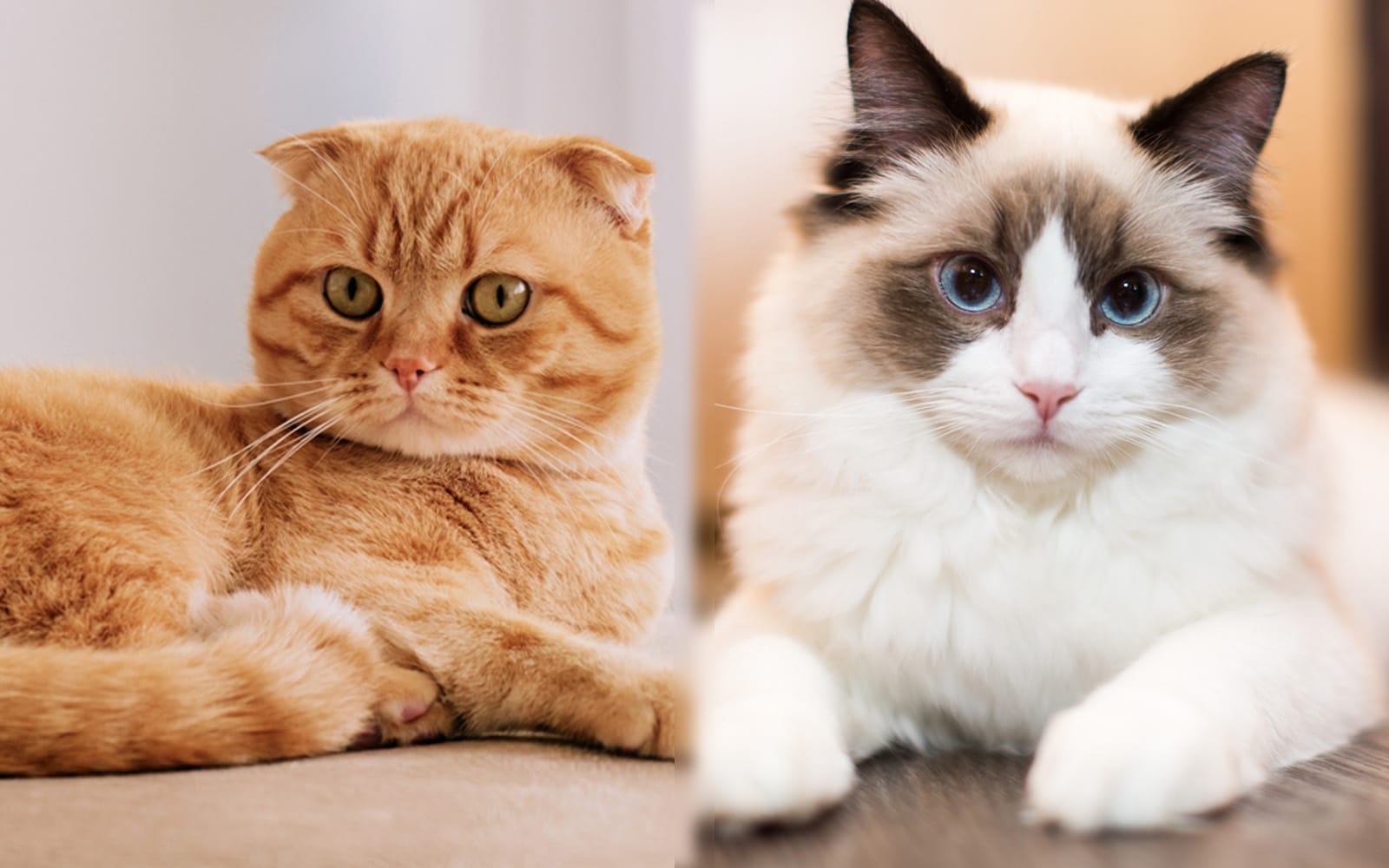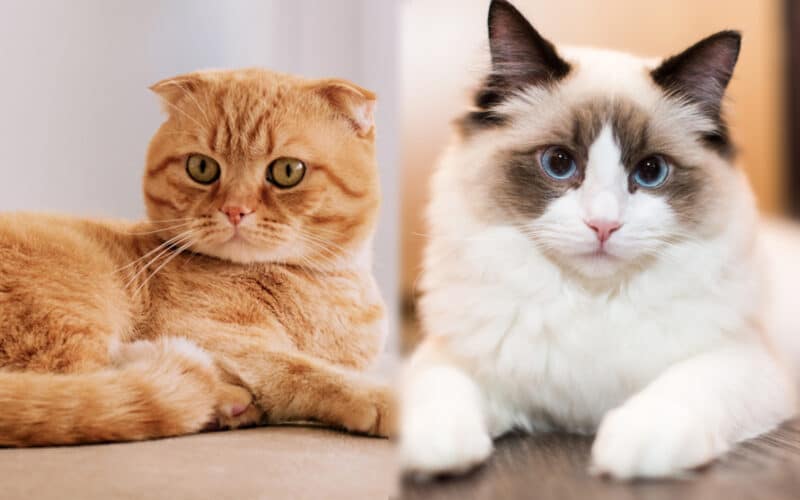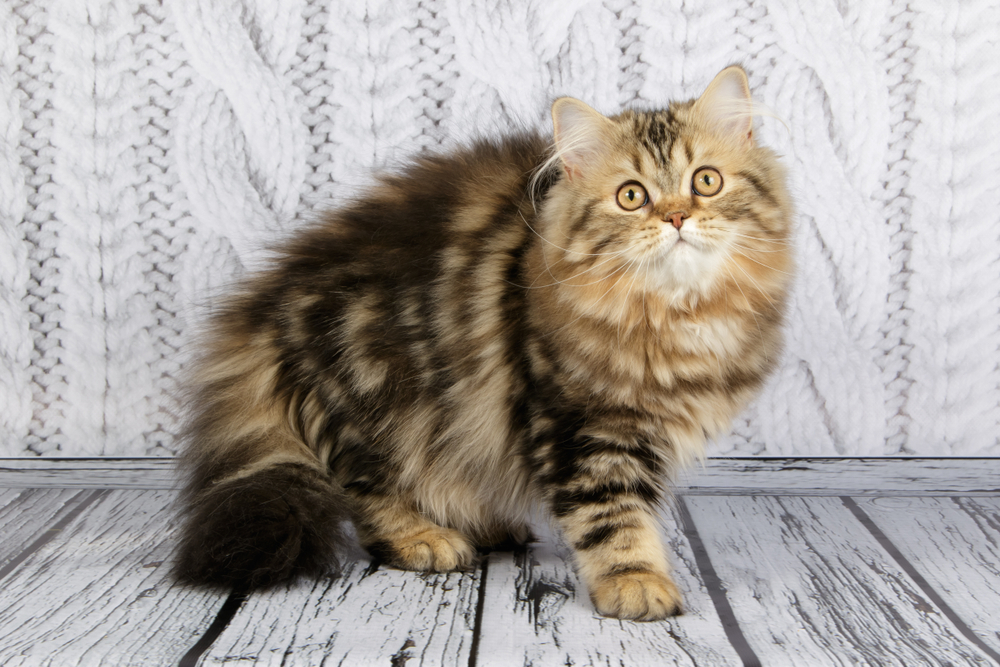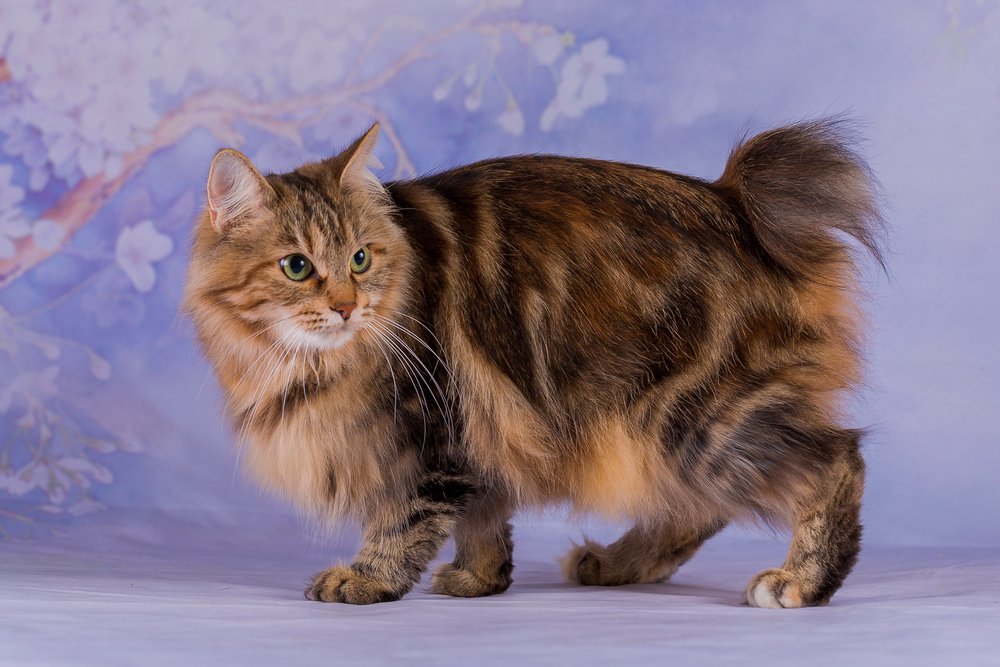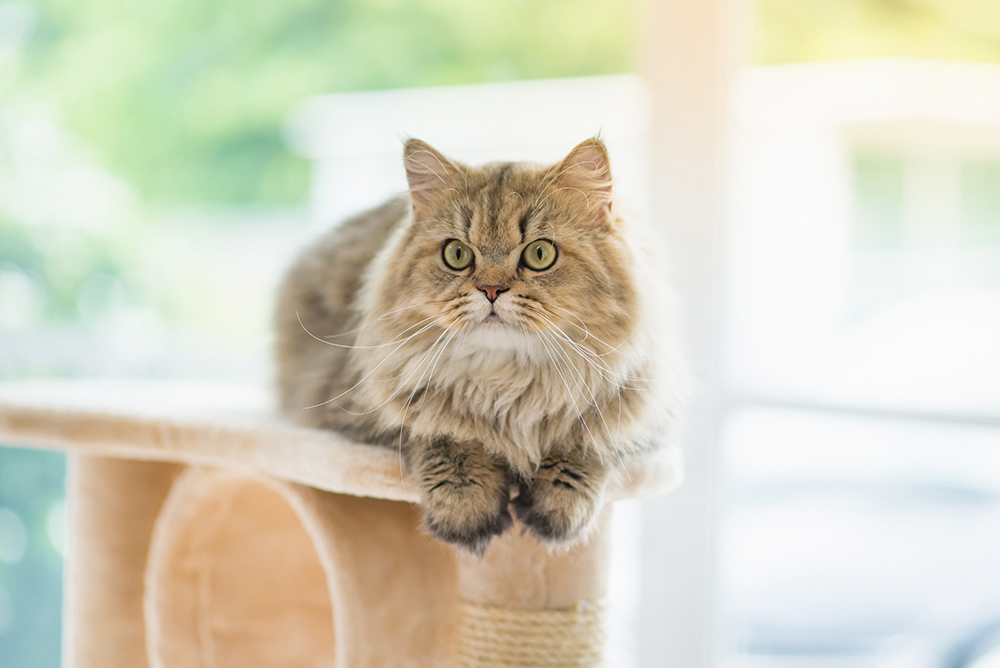Click Below to Skip Ahead
This interesting mix is not a true breed of cat but is rather a crossbreed: a mix between the loveable Ragdoll and the interesting Scottish Fold. This is a seldom-seen mix, which can be called a Ragafold or a Scottish Doll.
Breed Overview
Height:
8–11 inches
Weight:
6–20 pounds
Lifespan:
12–15 years
Colors:
Point: seal, chocolate, blue, silver, red, cream, lilac, tortoiseshell mixed colors, all colors (from Scottish Fold parent)
Suitable for:
Families with children, seniors, single people who work from home, homebodies
Temperament:
Kind-natured, laid back, affectionate, “dog-like”, gets along with other pets
The Scottish Fold originated in the UK, and it’s thought that all Scottish Folds come from one cat! The Ragdoll, on the other hand, was bred in America by one breeder in the 1960s. These two cats are distinct in nature but mix to produce a kitten with a wonderful temperament, but that’s unfortunately often plagued with many (sometimes serious) health issues.
Scottish Fold Ragdoll Mix Characteristics

Scottish Fold Ragdoll Mix Kittens
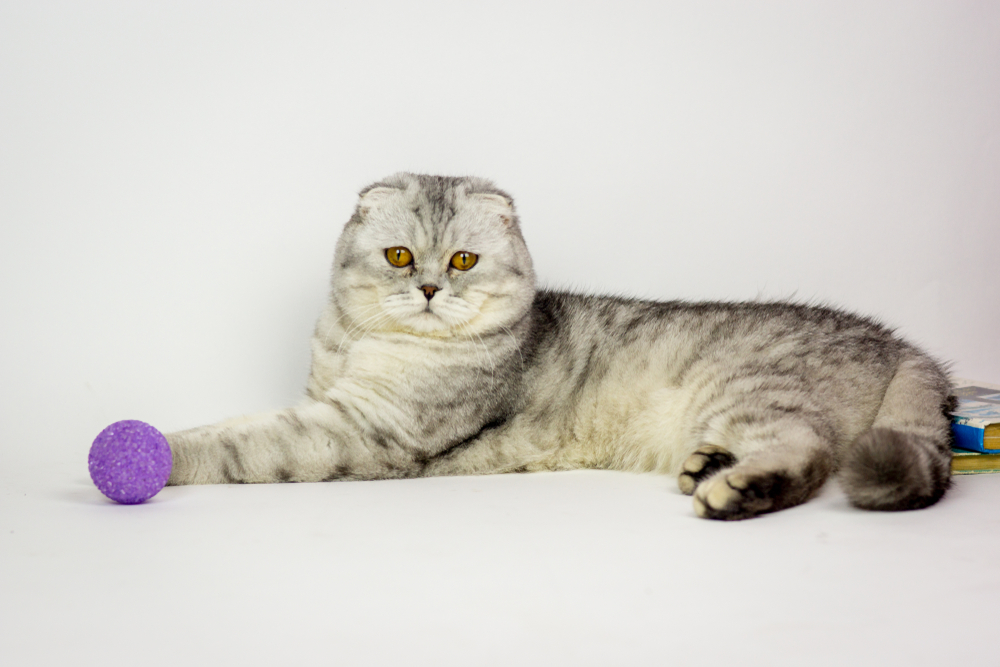
As you can probably imagine, this feline hybrid results in an adorably fun, fluffy, and unique kitten. With any mixed breed, the physical characteristics will vary from kitten to kitten depending on which parent features are more dominant. You can expect to see any combination of the Ragolls fluffy coat and the signature folded ears of the Scottish Fold but some of these traits may not be apparent until the kittens mature.
If you are looking for a gentle and affectionate breed, the Scottish Fold Ragdoll Mix is just that! They are inherently curious and make lovable and extremely social pets.
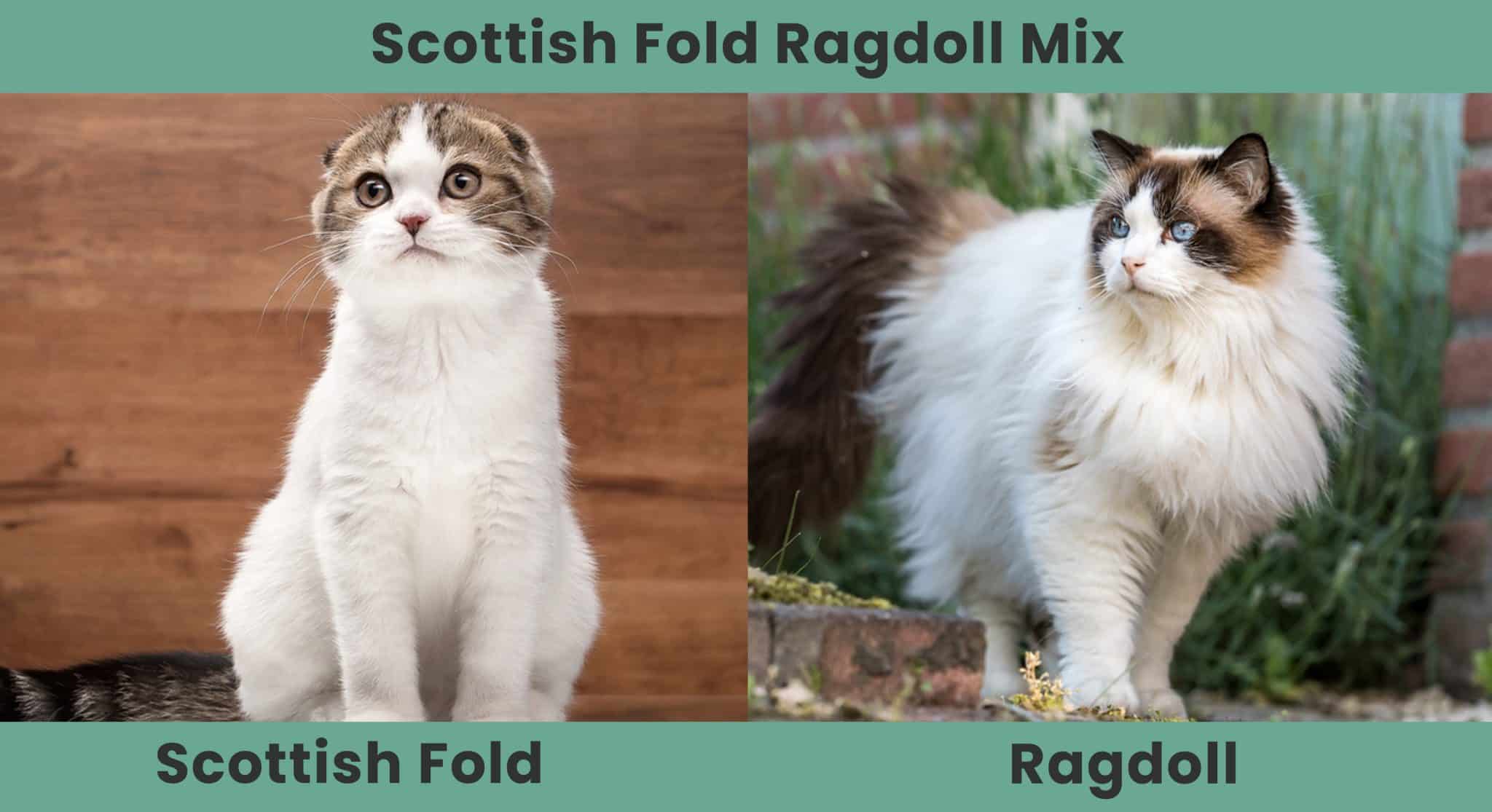

Temperament & Intelligence of the Scottish Fold Ragdoll Mix
Are These Cats Good for Families? 👪
These cats are gentle, kind, and very tolerant of children and other pets. This makes them very good cats for families, especially since they’re homebodies who want to be part of the scene. They are soft and well-mannered if socialized well at an early age and are known to be just as good with single people and seniors (loving a lap to sleep on) as they are with families.
Does This Breed Get Along With Other Pets?
The Scottish Fold Ragdoll mix is good with other pets if they are socialized during kittenhood (as all cats should be). Because cats are a solitary species, they don’t necessarily need the company of another cat and can sometimes get stressed if there aren’t enough resources available to them both. However, if they live with other cats, they can form very close bonds and join the family unit. In temperament, the Scottish Fold Ragdoll mix is generally regarded as tolerant and accepting of other cats and dogs.
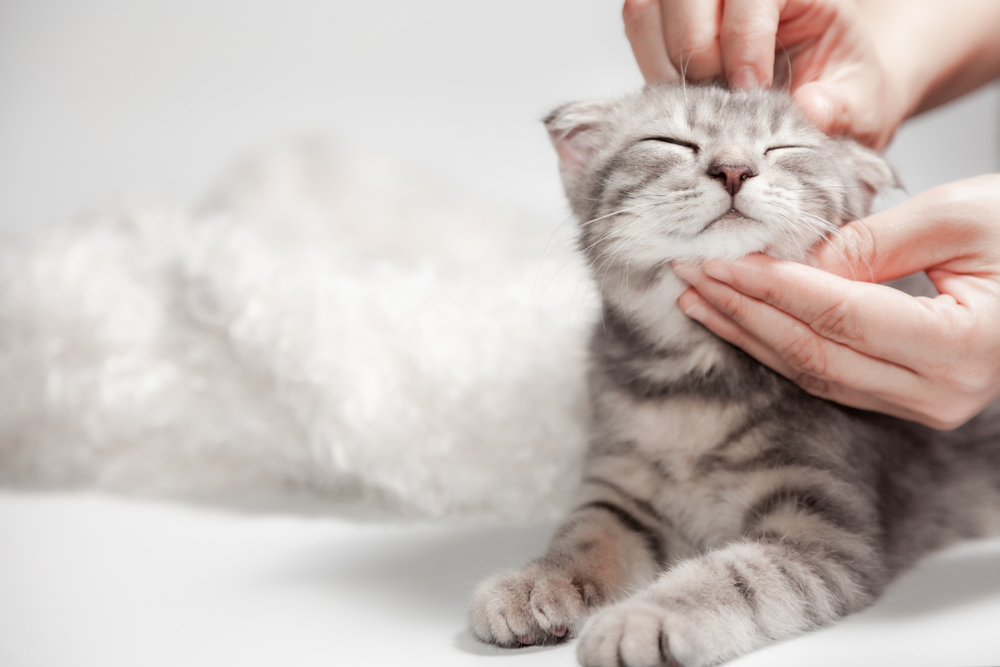

Things to Know When Owning a Scottish Fold Ragdoll Mix
Food & Diet Requirements 🐡
These cats can be stocky and prone to obesity, so they need a portion-controlled protein-rich diet to ensure they get all the nutrition they need without putting on too much weight. In addition, a well-balanced diet rich in taurine is required, as taurine is an essential additive for cats as they can’t produce it on their own.
Following the portion directions on your cat’s food to ensure they’re getting enough, and varying their diet with different protein sources (if they don’t have allergies) can help to keep them interested in the food while providing well-rounded nutrition.
Because of their parent breeds, the Scottish Fold Ragdoll mix may have heart and joint problems, meaning they need a diet tailored to heart and joint health. A diet high in omega-3 and 6 is essential for these cats, as these amino acids help to keep the heart and joints healthy. In addition, glucosamine and chondroitin supplements (usually used more in older animals) can benefit these cats, as Scottish Folds almost always suffer from a painful joint disease that can benefit from these supplements.
Exercise 🐈
Exercise and human interaction are very important to this crossbreed. Both the Ragdoll and the Scottish Fold love to be around their humans and involve them in play, so stimulation in the form of interactive exercise is essential to keep them happy and healthy. Care must be taken, however, as this crossbreed is likely to suffer from joint problems that can be painful. Gentle, regular exercise is the key, with around 30 minutes a day of interactive play being the best amount for these homebody cats.
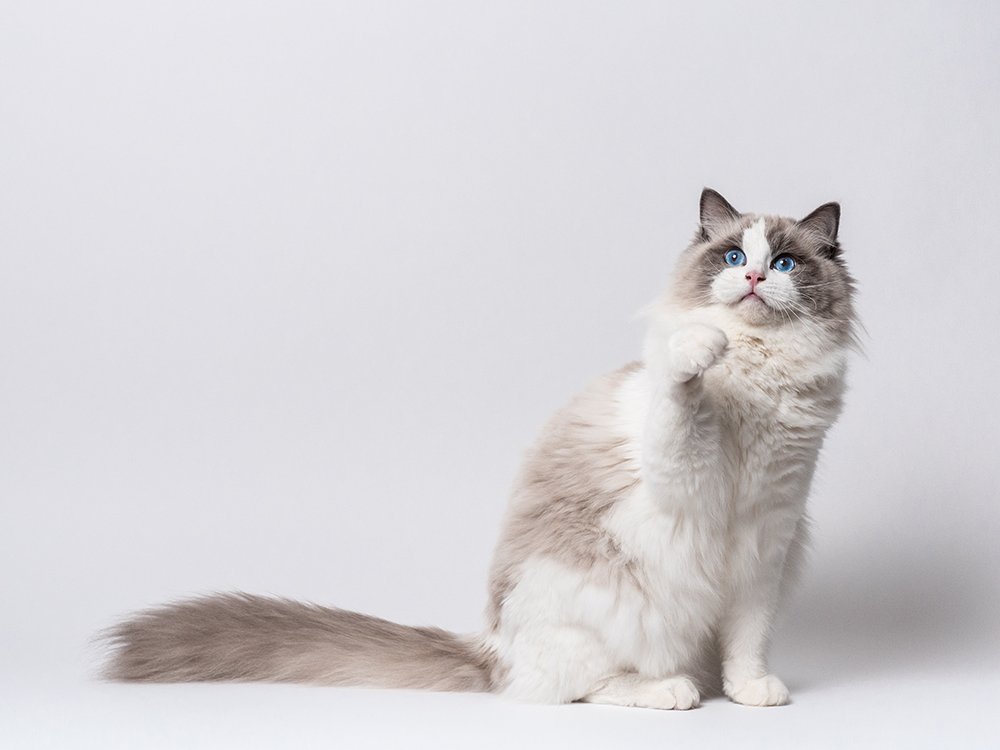
Training 🧶
The Scottish Fold Ragdoll mix isn’t the most intelligent cat on the scale, but it’s fairly smart and easy to train thanks to its inherited intelligence from its Scottish Fold parent. Scottish Folds are generally considered one of the most intelligent cat breeds, giving the crossbreed a good amount of trainability despite the potential for intelligence being reduced thanks to the Ragdoll side. The Scottish Fold Ragdoll crossbreed is still easily rained to even perform tricks like sit and give paw thanks to the addition of the Ragdoll’s easygoing and eager nature.
Grooming ✂️
Both parent cats have very different grooming needs thanks to the variety of coat types they can inherit. The Ragdoll has a long, thick coat that requires daily grooming to keep it tangle-free and comfortable, and they shed a lot. On the other hand, the Scottish Fold usually has a short and dense coat, but long-haired varieties are known. The Scottish Fold Ragdoll mix can have either of these coat types but is likely to have a semi-long hair coat that’s silky and thick.
This crossbreed should be groomed twice a week using a gentle brush to tease out any knots in the coat that might be forming and to help strip out any shed hair to prevent hairballs. This will help keep your cat comfortable; any excess grooming shouldn’t be needed, save for emergency grooms when they get into something they shouldn’t.
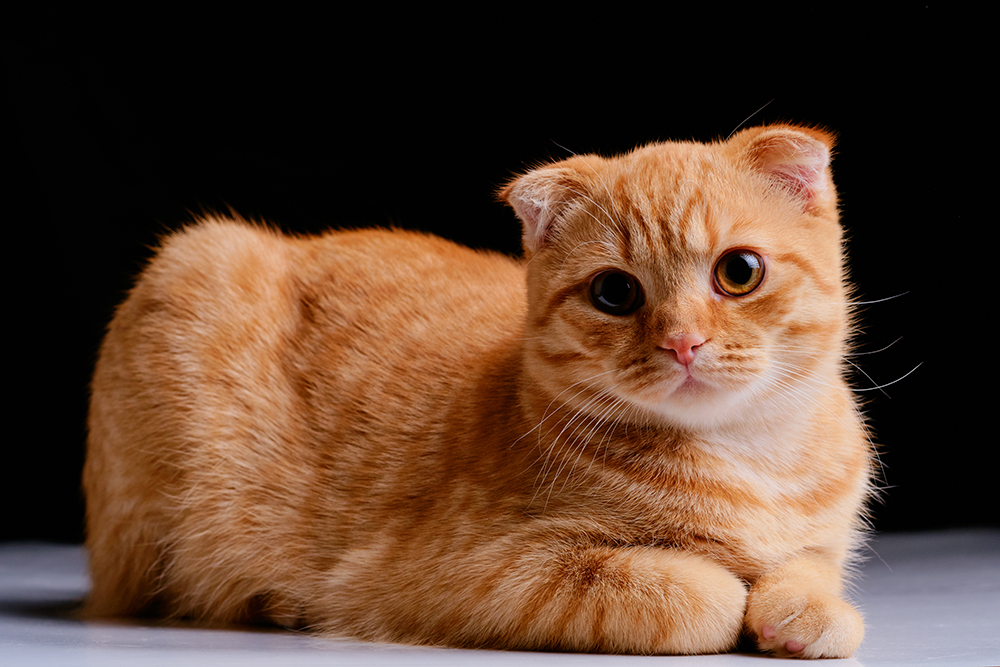
Health and Conditions 🏥
The reason the Scottish Fold Ragdoll mix is uncommon is likely due to the many health conditions they may suffer from (despite most crossbreeds being more healthy than pure breeds). Some of these issues are, unfortunately, life-limiting. Because of the danger of this mix inheriting health problems from potentially both parents, thorough testing of the parents should be carried out before any breeding is commenced.
- Ear mites
- Wax build-up
- Ear Infections
- Osteochondrodysplasia
- Hypertrophic Cardiomyopathy (HCM)
Male vs Female
Male cats are generally bigger and bulkier than their female counterparts, and this is also true for the Scottish Fold Ragdoll mix. They will grow for longer, reaching maturity at around five months, although males and females will finish growing completely around the two-year mark.
Both male and female cats will need to be spayed and neutered, and this procedure is much less involved for male cats. For example, if a male Scottish Fold Ragdoll cat isn’t neutered, he will grow big cheeks (or “jowls”) due to the testosterone coursing through his body and will likely try to roam or have other inappropriate behaviors (like aggression or humping) until he is neutered.

3 Little-Known Facts About the Scottish Fold Ragdoll Mix
1. Some Scottish Fold-Ragdoll mixes will have partially folded ears.
Because the Ragdoll cat’s ears are straight and the Scottish Fold ears are sometimes not folded, it’s possible that the mix can end up with partially folded ears.
2. They come in many color variations.
Ragdoll cats come in a very distinctive color and pattern: color point. The most common of these is seal, however, because the Scottish Fold can come in any color or pattern variation, the kittens born as crossbreeds of these two breeds can be any color or pattern too.
3. The Ragdoll-Scottish Fold mix is a rare crossbreed.
This mix of breeds is seldom seen, despite both breeds being around for a long time. This is probably due to both breeds having substantial health problems on their own, mainly the Scottish Fold. A combination of these breeds can produce kittens that have potentially devastating health problems.
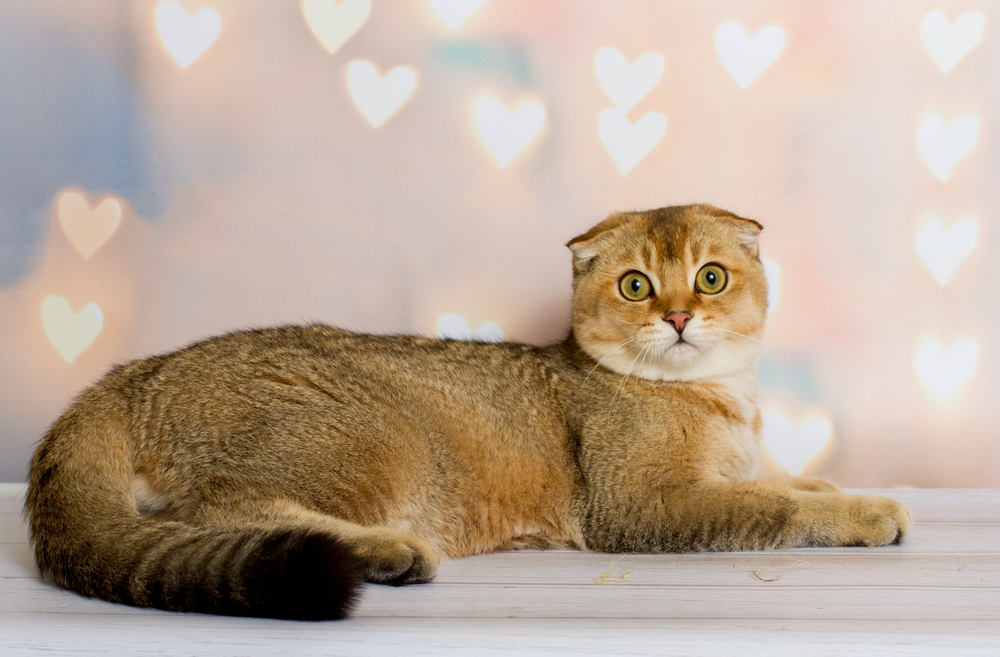

Final Thoughts
Despite this cat being a sweet, gentle, and loving family cat who adores being around its people, this crossbreed should not be bred. The serious health problems of the Scottish Fold have even led to the breed being banned outright in some countries, such as Belgium because it’s seen as cruel to continue to breed them. The same can be said for any crossbreeds of the Scottish fold, as only one copy of the faulty gene that causes Osteochondrodysplasia needs to be inherited by the kitten to cause lots of pain and suffering.
The Ragdoll also has its own health problems, which are also inherited, which could be why this loving crossbreed isn’t easy to find. The heartbreak of losing a loved, adored feline member of the family early to a painful illness is terrible and shouldn’t be suffered by anyone, which is why this crossbreed would be better off not being bred at all.
Related Read:
- Cat Temperature: Our Vet Explains What Is Too High, Low & How to Take It
- Cat Quality of Life Scale: Making End-of-Life Decisions (Vet Answer)
Featured Image Credit: Left (Scottish Fold) Alexander Sobol, Shutterstock; Right (Ragdoll) Peredniankina, Shutterstock

